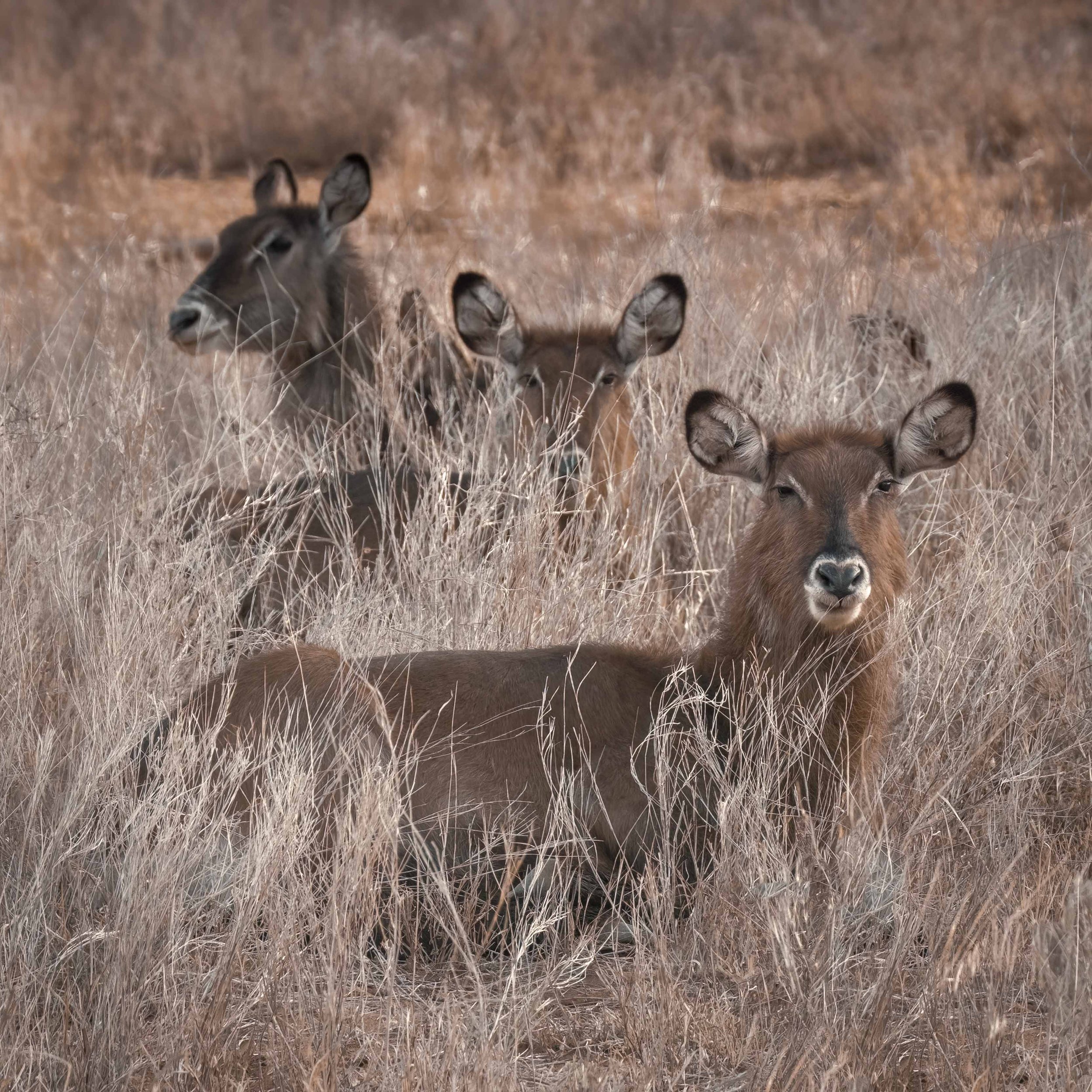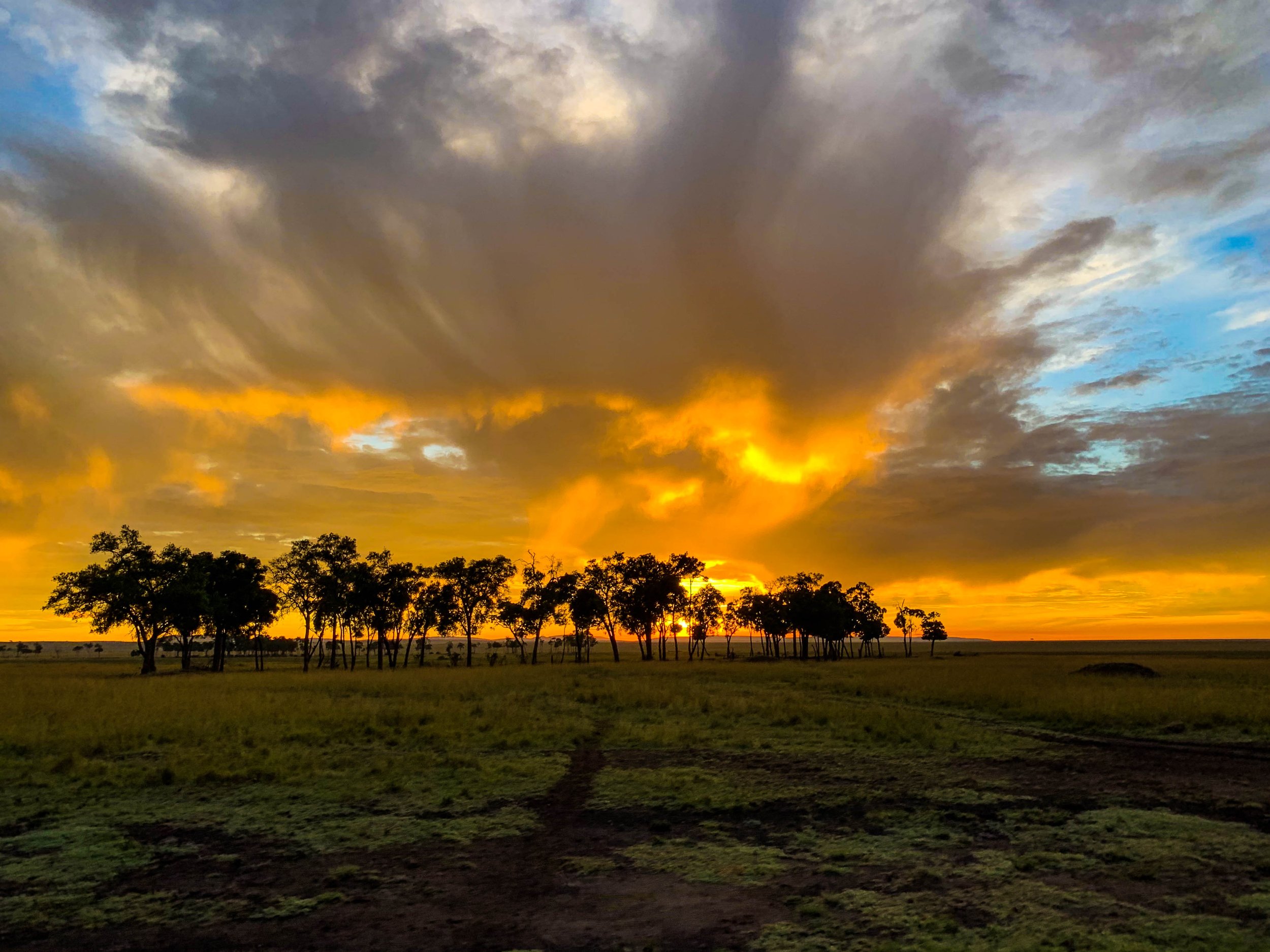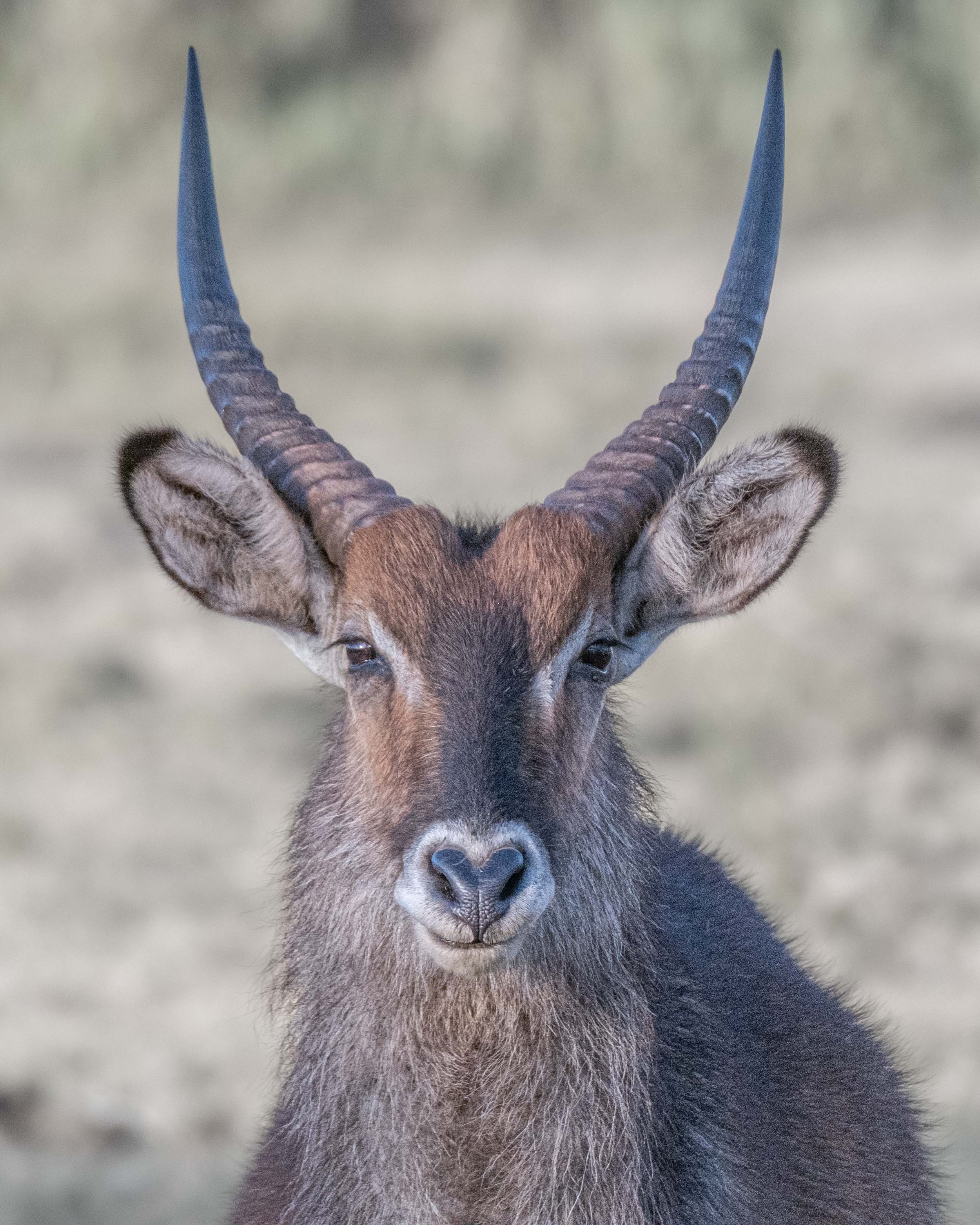They Wear Their Hearts on Their Nose
My computer crashed this past week. After hours with online support and a visit to the Apple hospital the final verdict was it was irreparable. I have a new one on order. I doesn’t arrive for 10 days. In the meantime I’m limping along on an old laptop with no access to my photo archives. My blog about new camera gear will have to wait.
Here’s a repost from last year about waterbucks, the beautiful antelopes who wear their hearts on their noses.
Africa has a dizzying array of antelopes. I was familiar with the impala on my first trip to Kenya but had no idea there are dozens of other antelopes from the tiny dik-dik to the hefty eland in sub-Saharan Africa.
The tiny did-dik is the smallest antelope in Africa
Elands can jump 10’ from a standing start!
Waterbucks are recognizable by their shaggy-brownish grey coats. As their name suggests they are usually found near water. They are more water-dependent than other antelopes and remain close to a water source to satisfy their need to drink 2-3 times a day. Their proximity to a water source ensures they usually have a dependable source of food. They can handle the coarse grass around wet areas that are too tough for other grazers. Waterbucks feed morning and night and typically rest and ruminate during the day.
Morning game drives reveal who survived the night. I remember encountering a group of waterbucks one dramatic morning on the Maasai Mara. I felt a sense of relief when I saw the shaggy grazers: “Good morning! You made it!” They reminded me to appreciate each day as a gift.
Most creatures have at least one superpower that supports survival. For antelopes its speed. The waterbuck has an added unique advantage. Their skin and hair give off an unpleasant oily smell which affects the meat and deters predators - skunky deer!. This oily protection also acts as waterproofing. They are also good swimmers and will retreat into deep water for safety.
The most endearing aspect of these large antelopes for me is their heart-shaped noses. Who can resist that love symbol stamped right on their faces? Males have beautiful wide spaced ringed horns that curve back from their heads adding to their handsome profile. The males are about 25% larger than females. All waterbucks have large, rounded ears and white patches above the eyes, around the nose, mouth, throat, and rump.
Waterbucks are generally found in small groups. They don’t have many close relationships. Females give birth to one calf a year after a 9-month gestation period. Like the white tail deer in my home territory, mothers hide their young for the first few weeks and return during the day to briefly suckle their calf. Calves are weaned after 6-8 months. Males wander off often forming bachelor groups while the females stay with their mothers. A full-grown male weighs 198–262 kg (437–578 lb) and females 161–214 kg (355–472 lb). Waterbucks can live up to 18 years if they manage to evade lions, hyenas, leopards, hunting dogs, crocodiles and humans.
Like all wildlife, loss of habitat is impacting waterbucks and their antelope cousins. Every species has a role to play in the ecosystem. When one animal disappears there is a ripple effect throughout the environment. When we learn about nature, we are more inclined to protect it. When we protect nature, nature protects us.







